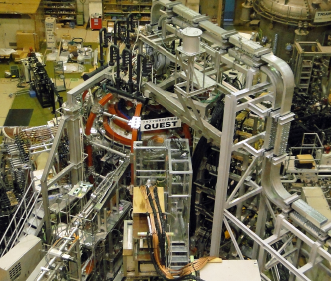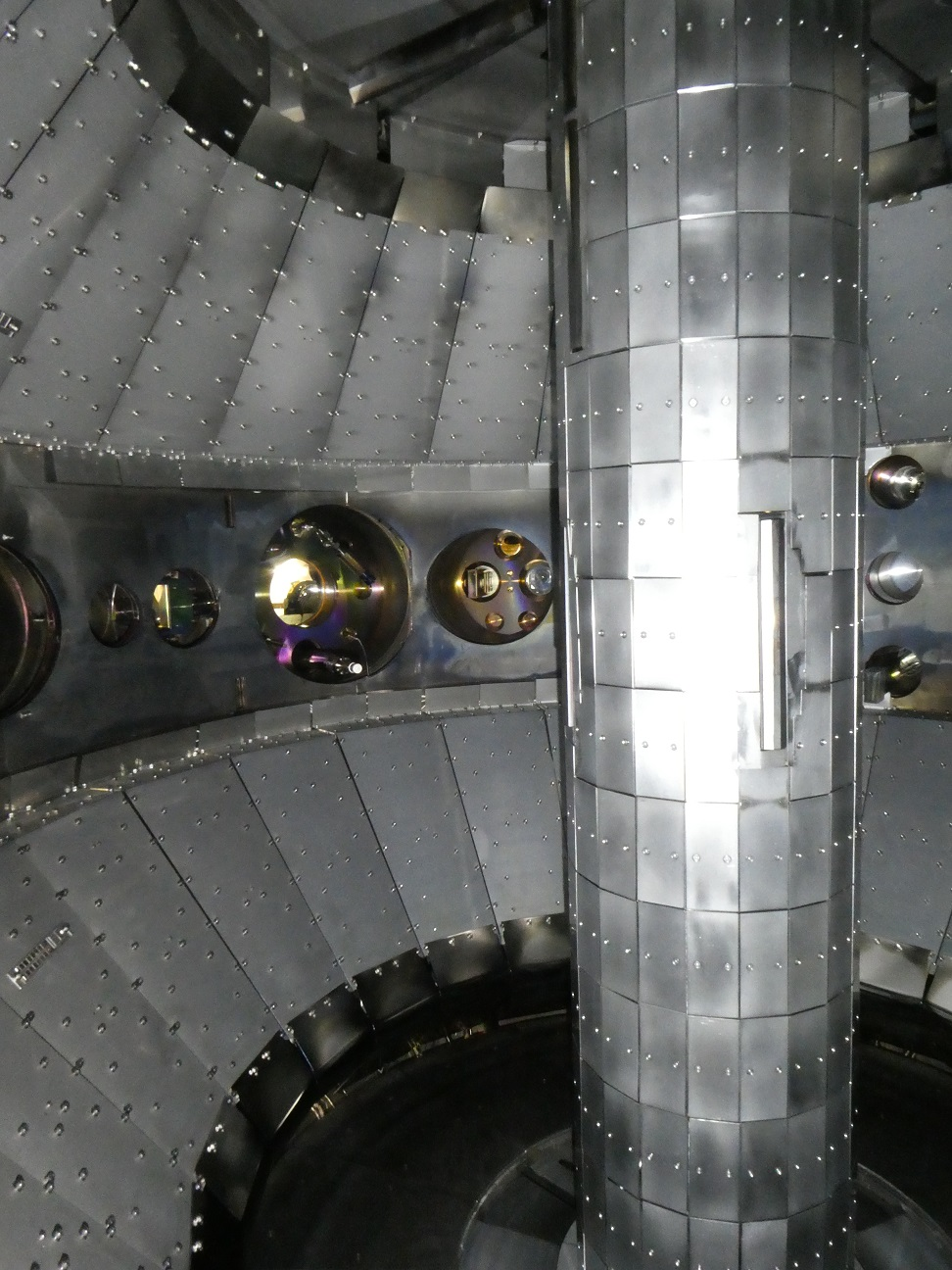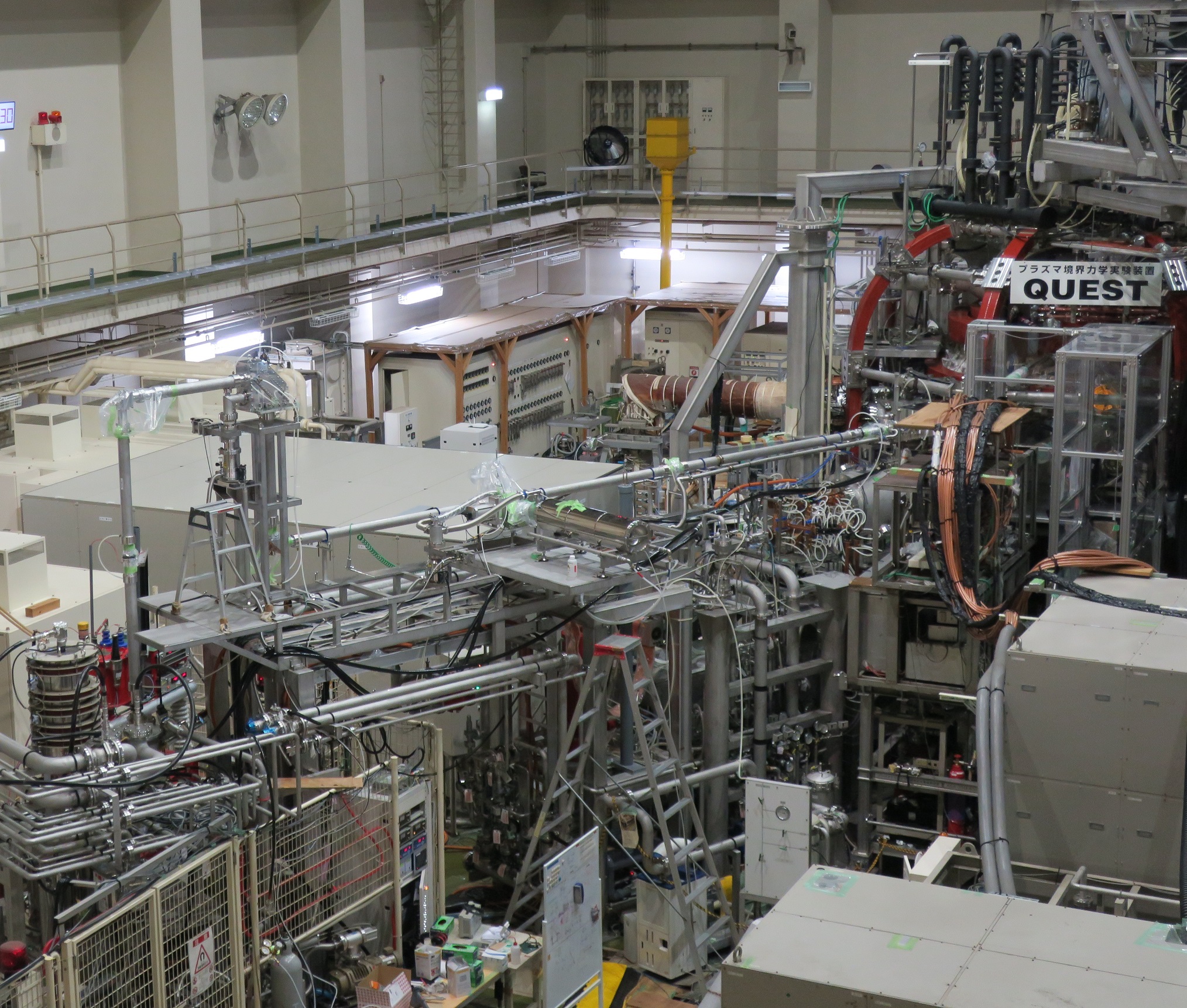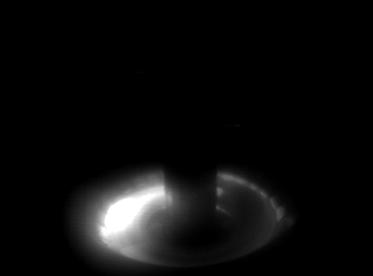
Advanced Fusion Research Center promotes research using the spherical tokamak device QUEST(Q-shu University Experiment with Steady-State Spherical Tokamak), which is an advanced magnetic confinement configuration, towards realization of a nuclear fusion reactor that will be required as a key energy source in the future. Based on the knowledge obtained by the superconducting high magnetic field tokamak device TRIAM-1M, a research plan for long-pulse plasma discharge is conceived, and non-inductive solenoid-less current drive of spherical tokamak plasma and plasma-wall interaction are studied.
QUEST was built in 2008 as the largest spherical tokamak device in Japan. Spherical tokamak can confine high plasma pressure with weak magnetic field compared to tokamak represented by ITER, so it is advantageous for economy and speed-up.
It is important to control this hydrogen recycling and maintain an appropriate mixing ratio of hydrogen molecules in the long-pulse steady-state plasma operation and the burning reaction of deuterium and tritium in a nuclear fusion reactor. In QUEST, particle control by a high-temperature wall is proposed using the property that the recombination rate at the wall surface strongly depends on the wall temperature, and the sperical tokamak has been sustained for a long time under temperature conditions from room temperature to 250°C. The temperature of the hot wall can be increased up to 500°C, enabling sperical tokamak experiments in an environment that simulates the wall temperature of a nuclear fusion reactor.
All QUEST coils and current power supplies are designed for constant operation. Sperical tokamak configuration has been sustained for more than 6 hours so far.


Heating and currend drive by electron Bernstein wave are planned and the preparation of a 250 kW continuous-wave klystron (frequency 8.56 GHz) is in progress.
We are also promoting international joint research with other research institute such as Tokamak Energy(UK), IPR India(India), ASIPP (China), Southwest University(China), Seoul National University(Korea, Massachusetts Institute of Technology(USA), University of Stuttgart (Germany).

